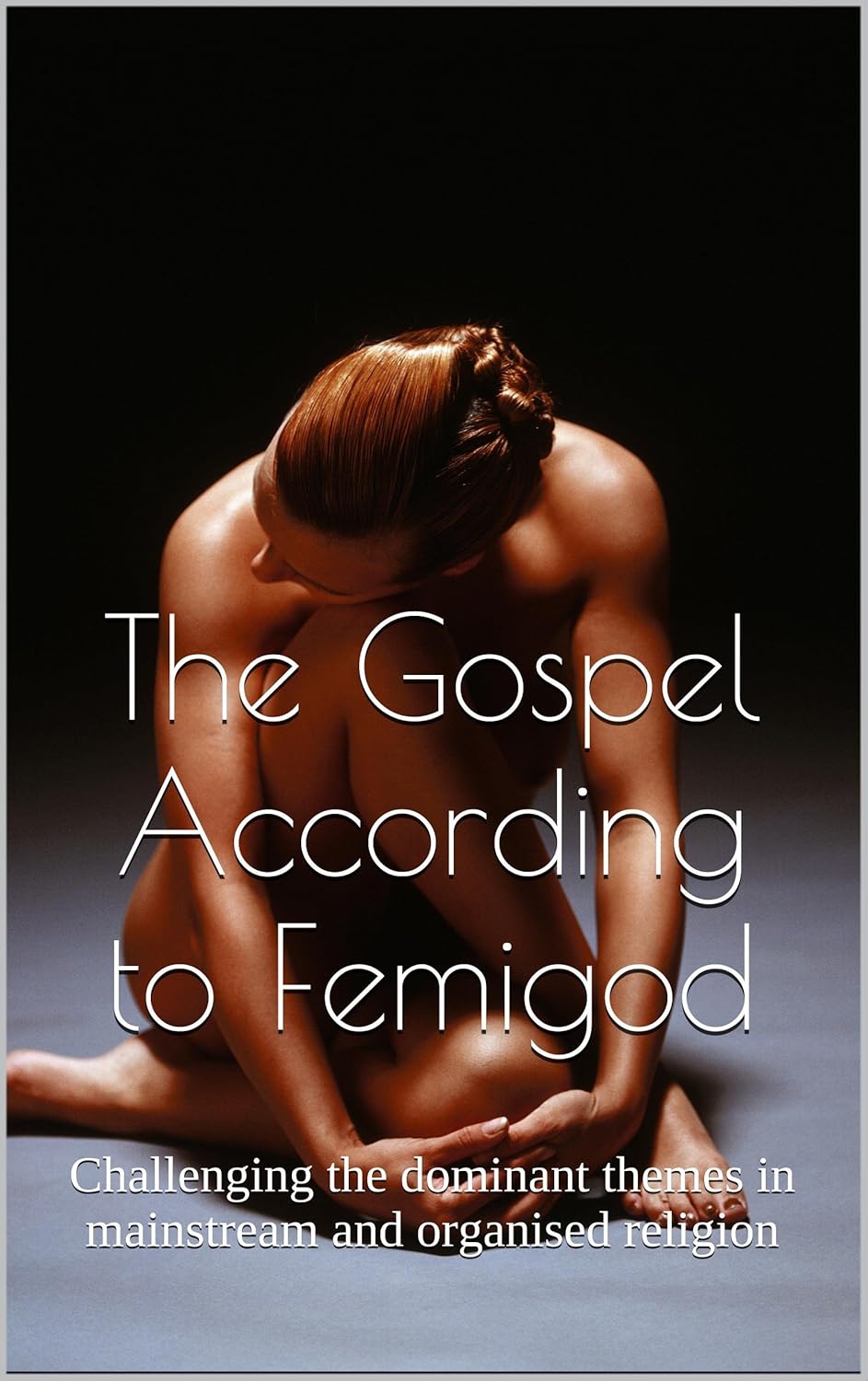Mark 15:41, Jesus and the Female Followers
In Galilee these women had followed him and cared for his needs. Many other women who had come up with him to Jerusalem were also there.
//Quite often, I find myself in a discussion about the role of women in early Christianity. It seems many women held positions of responsibility and respect, despite the suppressive tone of later New Testament writings like the book of Timothy. Why is this so? Why did Christianity break the social rules and give women more respect than did other Judaic branches?
It goes clear back to Jesus. One sometimes forgets that Jesus’ entourage included many women. Mark’s Gospel reminds us of this in today’s verse. Several women followed Jesus … not just male disciples … and many were still a part of his entourage as he made his final, fateful trip to Jerusalem.
Among these female followers we can find Mary, the wife of Clopas; Susanna; Salome the disciple (as opposed to the Salome who danced for Herod); Mary, the mother of James and Joseph; Joanna, the wife of Herod’s steward Chuza; and, most famous of all, Mary of Magdala. These are among the “many” who followed and served Jesus, as he roamed from town to town. Luke 8:2-3 makes it clear that Jesus’ roaming band of gospel-spreaders included women. The 72 disciples of Luke 10:1-12 undoubtedly included women.
If Christianity later tended back toward suppression of women, it certainly wasn’t because of the example of Jesus.
Luke 5:14, Cleansing the Leper
Then Jesus ordered him, “Don’t tell anyone, but go, show yourself to the priest and offer the sacrifices that Moses commanded for your cleansing, as a testimony to them.”
//All four gospels tell the story of a leper whom Jesus heals. Jesus then orders the man to go show himself to the priest in the temple, and offer the appropriate sacrifices.
This command puzzles many people. the ritual to which Jesus alludes is this: The leper, in order to be cleansed, must bring two birds to a priest. One of them is sacrificed that day, while the other is dipped in its blood and then released. The blood is sprinkled on the leper, after which he must shave all his hair and bathe daily for a week. Then the leper brings two spotless lambs and one spotless ewe back to the priest to be sacrificed as a burnt offering. The blood of this second sacrifice is dabbed on the leper’s right earlobe, right thumb, and right big toe. After the leper is sprinkled seven times with oil, he is finally pronounced cleansed, free of sin and allowed to rejoin the community.
So is this what Jesus expected the man to do? No, of course not. Let’s read what happened just prior to day’s verse, when Jesus agrees to heal the leper:
Jesus reached out his hand and touched the man. “I am willing,” he said. “Be clean!” –Luke 5:13
So the leper was cleansed immediately, with no need for a week-long cleansing ritual! No need for expensive sacrifices, no need to bow to the priest’s authority! Jesus has superseded the temple rite and the need for a priest. Why, then, does Jesus send the leper to the priest with this instruction?
Perhaps Jesus was joking. Perhaps he was sending a little message to the priesthood that their time was ending.
Book review: The Gospel According to Femigod
by Femigod
★★★
In what appears at first to be an anonymous book, “Femigod” first questions mainstream and organized religion and then presents various spiritual and philosophical alternatives as superior. The author, it turns out, is named Femi (whether male or female I was unable to detect) and concludes that we are all gods in our own right, more powerful than we are led to believe. “Femigod” describes his/her own spiritual enlightenment by lightly skimming a plethora of belief options.
The traditional Eastern, Western, and African religions are covered first, highlighting their inconsistencies, contradictions, and absurdities. None of these objections are covered in detail, and none are original or deep; all are reflections of the author’s own disillusionment with no counterarguments, presented more as questions than answers in order to encourage you to critically examine your own faith upbringing. (Why is God male? Why does he want to be worshipped? What is God’s hangup about sex? etc.)
After delving into various myths and introducing a number of philosophers, Femigod then presents metaphysical alternatives: The astral world, paganism, astrology, and more. Along the way, you’ll learn a little about Tarot, angels, and mind-altering drugs.
My disappointment in the book was not in the topic, nor the obvious metaphysical slant, but in its shallow presentation. This topic is simply too much to cover in 168 pages. Read this one if you’re already questioning traditional religion and looking for something else to dive into. Then find other books to learn more about those alternatives.

Matthew 2:1, How Many Wise Men Were There?
Now when Jesus was born in Bethlehem of Judaea in the days of Herod the king, behold, there came wise men from the east to Jerusalem.
//Question: How many wise men were there?
The Bible doesn’t say. We’ve probably all heard many times over that the Christmas stories have it all wrong, and nobody knows how many wise men there really were.
But if you said three, you’re probably right.
Perhaps the idea of three wise men derives from the three gifts they brought: gold, frankincense, and myrrh. Or another reason may be seen in the stars: Many traditions have called the three stars of Orion’s belt the “kings” or “magi.” They form a direct line to Sirius and appear to follow him straight to the birthplace of the sun (Son). But there’s yet another reason to imagine there were exactly three wise men.
It turns out that the story of Jesus closely mimics a number of Old Testament themes, and Matthew especially loves to relate these themes. Jesus’ birth is no exception to the rule. The Christ child is born miraculously of a virgin; Isaac, considered a typology of Christ in the Old Testament, is likewise born miraculously, this time to a postmenopausal woman. So, let’s go back to the story of Abraham and Sarah, parents of Isaac. What do we find?
Three wise men! Three mysterious strangers led by God to Abraham and Sarah, foretelling Isaac’s miraculous birth.
Matthew 17:2-3, Moses and the Transfiguration of Jesus
There he was transfigured before them. His face shone like the sun, and his clothes became as white as the light. Just then there appeared before them Moses and Elijah, talking with Jesus.
//This is Jesus being “transfigured” on the mountain. But what do Moses and Elijah have to do with this story? Well, I don’t know about Elijah (except to say that many Jews expected both of them to return to earth to inaugurate the age of the Messiah, which they seem to be doing here) but Moses’ appearance may be a subtle hint, meant to make an analogy more obvious. The analogy is this: have you ever compared the story of Jesus’ transfiguration in the New Testament to that of Moses in the Old Testament? Note especially this verse:
And when Aaron and all the children of Israel saw Moses, behold, the skin of his face shone; and they were afraid to come nigh him. –Exodus 34:30
Here, then, are some parallels to get you thinking:
1. Jesus’ face shines like the sun, just as Moses’ did.
2. Jesus’ disciples are terrified, just as the people were afraid of Moses.
3. Jesus took three people up the mountain with him (Peter, James, and John). Likewise, Moses took three people up the mountain with him (Aaron, Nadab, and Abihu).
4. Moses’ transformation was a result of coming into the glory of God. Jesus is transfigured by his own glory, transcending Moses.
5. A cloud envelopes the mountain where Jesus stands, just as it did Mount Sinai, where Moses stood.
1 Samuel 17:4, How Tall Was Goliath?
And there went out a champion out of the camp of the Philistines, named Goliath, of Gath, whose height was six cubits and a span.
//The Bible tells the story of how David, who is described as less than intimidating in his height, takes on a Philistine champion who measures “six cubits and a span.” If a cubit measures the distance from fingertip to elbow, that equates to about a foot and a half. A span is from thumb to little finger, another half foot. So, six cubits and a span equals about nine and a half feet! What a giant!
The Septuagint–the Greek version of the Hebrew Bible, written between the 2nd and 3rd centuries BC–gives a different figure. It lists Goliath’s height as four cubits and a span; about six and a half feet. Still unusually tall for that era.
Which version should be believed? Did the Septuagint translators, disbelieving the incredible height in the original story, change it to only four cubits? Or was the Hebrew version updated to turn Goliath into a mythical giant?
Your guess is as good as mine.
Book review: All You Want To Know About Hell
by Steve Gregg
★★★★★
I really enjoyed this one. I asked for a review copy because I had previously devoured Steve Gregg’s Revelation: Four Views. This guy is an engrossing writer who gets right to the heart of the matter. While Gregg doesn’t entirely mask his own opinion, he does manage to fairly represent several alternative views with these books, and this time around he gives voice to the following opinions about hell:
- Traditionalists, who stick with the common view of everlasting conscious torment.
- Conditionalists, who argue for annihilation of the sinful. “The wages of sin is death.”
- Restorationalists, who insist that hell is a place of rehabilitation. Everyone will eventually find their way to heaven.
Universalists, at least those who reason that for God to be victorious no one could find themselves in hell, are not strongly represented in the book. Hell is too real in scripture to dismiss.
It’s important to emphasize that all three views are solidly founded in scripture. Lots and lots of scriptural references are provided for each view, and all views have thoughtful, scholarly supporters.
We’d all like to know the ultimate truth about hell, but I just don’t think the scriptures are in total harmony in this matter. That’s where this study led me, though I doubt that’s where Gregg meant to lead. The more I study topics like this, the harder it is to believe in Biblical Inerrancy. I remain baffled as to why otherwise thoughtful Bible scholars rage against the obvious … that doctrinal differences in the Bible are a natural result of differing opinions among the Bible’s writers.
Nevertheless, this is a book to make you think, and to make you appreciate the richness of the Bible even as it examines the most frightening topic known to man.

1 Samuel 25:3, The Real Story of Nabal
Now the name of the man was Nabal; and the name of his wife Abigail: and she was a woman of good understanding, and of a beautiful countenance: but the man was churlish and evil in his doings;
//Thus are we introduced to a man named Nabal, whom David quarreled with. The very first thing we learn is that he is “churlish and evil.” But what happens if we read this story from Nabal’s viewpoint?
Here is what seems to happen. A group of bandits running a protection racket appear out of nowhere. They make the point that not one of them has bothered any of Nabal’s shepherds, and in fact, neither has anybody else while the bandits have been around. Don’t they deserve a little reward for protecting the shepherds? “Give, I pray thee, whatsoever cometh to thine hand unto thy servants,” they demand.
Nabal refuses to be threatened, and turns them down. Who is this David fellow, says he? Never heard of him.
So, four hundred bandits set out with swords to kill Nabal and take what he has by force. But Abigail, Nabal’s wife, catches wind of what’s going on.
“Then Abigail made haste, and took two hundred loaves, and two bottles of wine, and five sheep ready dressed, and five measures of parched corn, and an hundred clusters of raisins, and two hundred cakes of figs, and laid them on asses.”
Abigail saves the day by succumbing to the bandits’ protection racket, and Nabal is allowed to live.
Matthew 23:36-38, The Desolation of Jerusalem
Truly I tell you, all this will come on this generation. “Jerusalem, Jerusalem, you who kill the prophets and stone those sent to you, how often I have longed to gather your children together, as a hen gathers her chicks under her wings, and you were not willing. Look, your house is left to you desolate.”
//Just as the majority of the Old Testament focused upon the destruction, return to, and rebuilding of Jerusalem, the New Testament was strongly influenced by the desolation of Jerusalem. In today’s verse, Jesus is seen weeping over Jerusalem, because he knows her fate. Within the same generation (forty years is often considered a “generation” in the bible), Jerusalem would be completely destroyed. General (and later Emperor) Vespasian was determined to utterly destroy Jerusalem and the Temple of the Jews.
This happened in 70 AD, and it was not a territorial war. It was a religious matter. Judaism began to be seen as a dangerous spawning bed for militant messianic uprisings, pitting God against Rome. Hence, when Vespasian destroyed the Temple and forbade its rebuilding, he retained the temple tax, forcing Jews to pay the identical tax to the Temple of Jupiter. Jerusalem was renamed Aelia Capitolina, and the name Jerusalem ceased to exist in all official Roman documents by the year 135 AD.
No wonder Jesus wept, contemplating its fate. No wonder this war had such an impact on Christian writings, as Christians sought to make sense of the destruction of Judaism’s temple cult. For more about this topic, see my book on Revelation.
Matthew 16:18, Pope Peter
And I say also unto thee, That thou art Peter, and upon this rock I will build my church; and the gates of hell shall not prevail against it.
//It’s surely not my intention to discredit the Catholic Church, but one of its teachings doesn’t quite jibe with the Bible. It’s this idea that Peter was the successor to Jesus, the leader of the new community of Christians. The first Pope.
This doctrine is founded primarily upon today’s verse, in which Jesus seems to designate Peter as the foundation for the new church. Never mind that this is only one interpretation of the verse (naming Peter as the rock in question). Never mind that the authenticity of the verse is disputed among scholars. Never mind that this is the only verse—not only in the Bible, but in any early historical document we’ve uncovered—which names Peter as the new boss.
The real problem is that there are many passages in the Bible citing somebody else as the head of the church. The real successor seems to be James, the brother of Jesus. Peter may have been bishop of Rome, a satellite Christian assembly in a faraway land, but James was awarded the position of bishop of Jerusalem, the central and authoritative assembly. Christianity, in every example you read during the life of Peter, was centered in Jerusalem, headed by James.
Paul writes that James, Peter, and John were the pillars of the church (Galatians 2:9), but could it be that James, the first one mentioned—more than Peter, Paul, or John—as the true successor preserves the more authentic message of Jesus? Is the Epistle of James, with its doctrine of justification by works, the book we should really be reading?















 354 Circles
354 Circles
 603 Goodreads Friends & Fans
603 Goodreads Friends & Fans

 Hello! I'm an author, historical Jesus scholar, book reviewer, and liberal Christian, which means I appreciate and attempt to exercise the humanitarian teachings of Jesus without getting hung up on any particular supernatural or religious beliefs.
The Bible is a magnificent book that has inspired and spiritually fed generations for thousands of years, and each new century seems to bring a deeper understanding of life’s purpose. This is true of not only Christianity; through the years, our age-old religions are slowly transforming from superstitious rituals into humanitarian philosophies. In short, we are growing up, and I am thrilled to be riding the wave.
I avidly read all thought-provoking religion titles. New authors: I'd love to read and review your book!
Hello! I'm an author, historical Jesus scholar, book reviewer, and liberal Christian, which means I appreciate and attempt to exercise the humanitarian teachings of Jesus without getting hung up on any particular supernatural or religious beliefs.
The Bible is a magnificent book that has inspired and spiritually fed generations for thousands of years, and each new century seems to bring a deeper understanding of life’s purpose. This is true of not only Christianity; through the years, our age-old religions are slowly transforming from superstitious rituals into humanitarian philosophies. In short, we are growing up, and I am thrilled to be riding the wave.
I avidly read all thought-provoking religion titles. New authors: I'd love to read and review your book!
 Hi! While Lee writes the articles and reviews the books, I edit, organize, and maintain the blog. The views expressed here are Lee's but I'm his biggest supporter! :-)
Hi! While Lee writes the articles and reviews the books, I edit, organize, and maintain the blog. The views expressed here are Lee's but I'm his biggest supporter! :-)
Connect With Me!